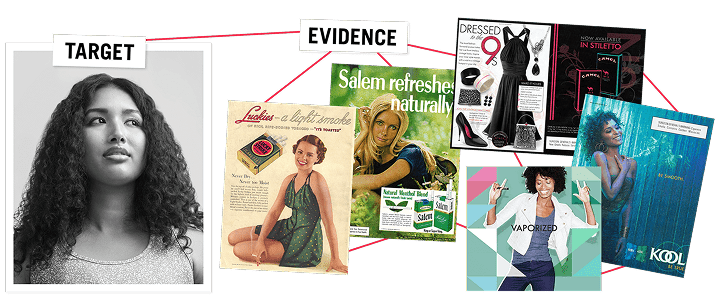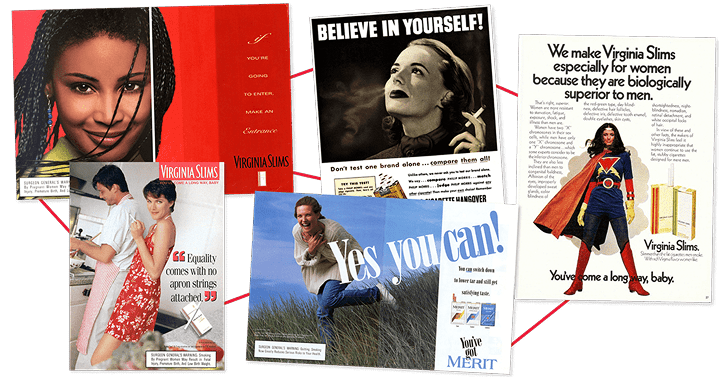
tobacco targets
Women
Big Tobacco has spent nearly a century marketing addiction to women. From fashion magazines to social media, their goal has been the same — make smoking look empowering while hiding the truth.
They use body image, gender roles and even feminism to sell nicotine as part of a woman’s identity.
In 1929, there was the much-publicized event in the Easter Sunday parade in New York where Great American Tobacco hired several young women to smoke their “torches of freedom” (Lucky Strikes) as they marched down Fifth Avenue, protesting women’s inequality.”
-Amanda Amos, Margaretha Haglund
A Long History of Manipulation
In the 1920s, smoking was seen as taboo for women. So, tobacco companies flipped the narrative. They staged events like the “Torches of Freedom” march in New York, paying young women to smoke Lucky Strikes in public as a staged protest for equality.
From that point on, smoking was no longer off-limits. It was sold as fashionable, independent and strong — even as it caused serious harm.
Marketing Menthol as Feminine and Harmless
Tobacco companies didn’t wait for women to choose menthol cigarettes. They pushed them.
Menthol feels smoother and easier to inhale, which made it easier for new users to get hooked. Tobacco ads used words like “light,” “slim” and “refreshing,” and later added terms like “plant-based” and “organic” to appeal to health-conscious women.
As of 2022, 44% of women who smoke, smoke menthol cigarettes, largely due to these targeted marketing ploys.¹

Hijacking Women’s Voices and Values
Today’s campaigns don’t look like those from the 1960s, but the tactics are the same. Tobacco companies:
- Sponsor women-focused events and influencers
- Use buzzwords like “wellness” and “confidence”
- Post pro-women messages on social media while selling harmful products
On International Women’s Day, major tobacco brands post about equality and empowerment — while continuing to profit from addiction. The social media tactics run deeper, as many vape and nicotine products have been promoted on TikTok and Instagram, with teen girls the most sought-after demographic. Fortunately, social media platforms have added new restrictions around tobacco product marketing and promotion after a major push by public health groups.² However, Big Tobacco always finds new loopholes through product placement and new tactics.
Health Risks for Women
Smoking doesn’t empower women. It harms them — often more than men. Women who smoke:
- Are twice as likely to develop certain types of lung cancer
- May have a harder time quitting due to biological differences
- Face increased risks of stroke, heart disease and reproductive health issues
- Are more likely to experience severe complications during pregnancy
- Often suffer from anxiety and depression made worse by nicotine

The Cold, Hard Truth
| Oklahoma | The National Average | |
| Women who smoke tobacco | 15.3% | 9.9% |
Source: America’s Health Rankings
The Industry Doesn’t Care Who It Hurts
Tobacco companies have never supported women. They’ve simply changed the story to keep making sales — whether it’s through magazine ads, diet culture or influencers. The truth is simple: Smoking doesn’t protect your identity, it only secures their profits.